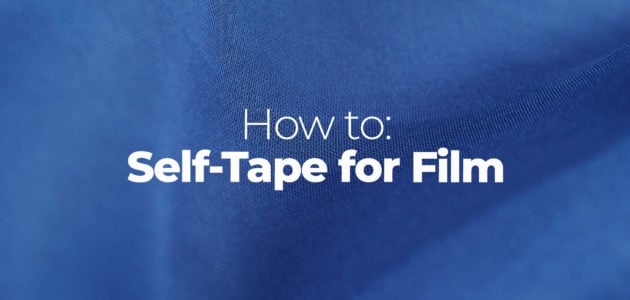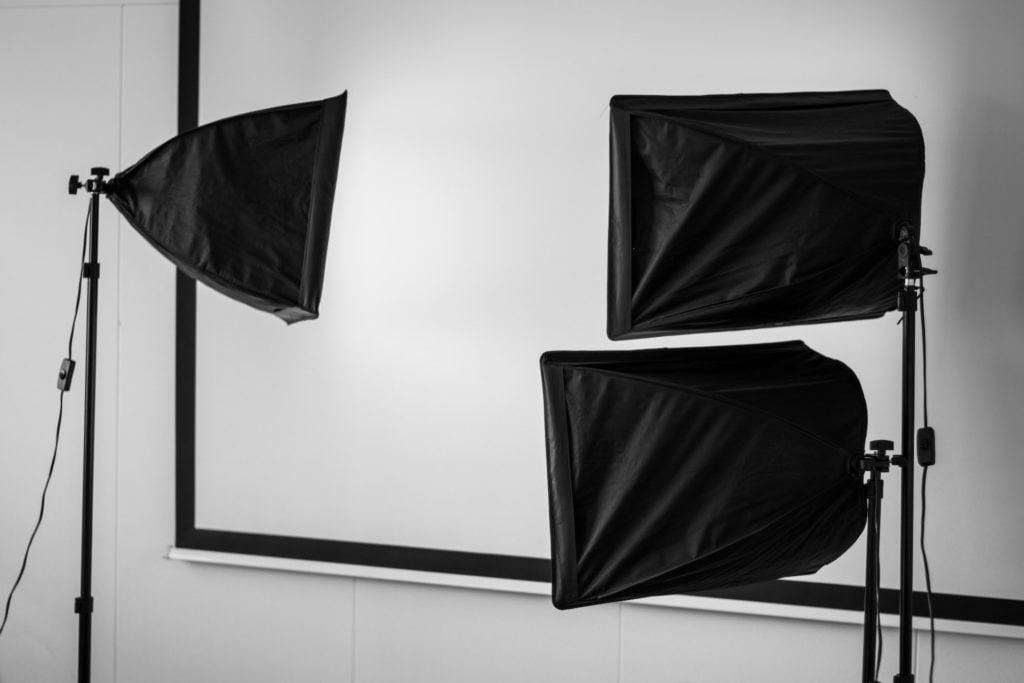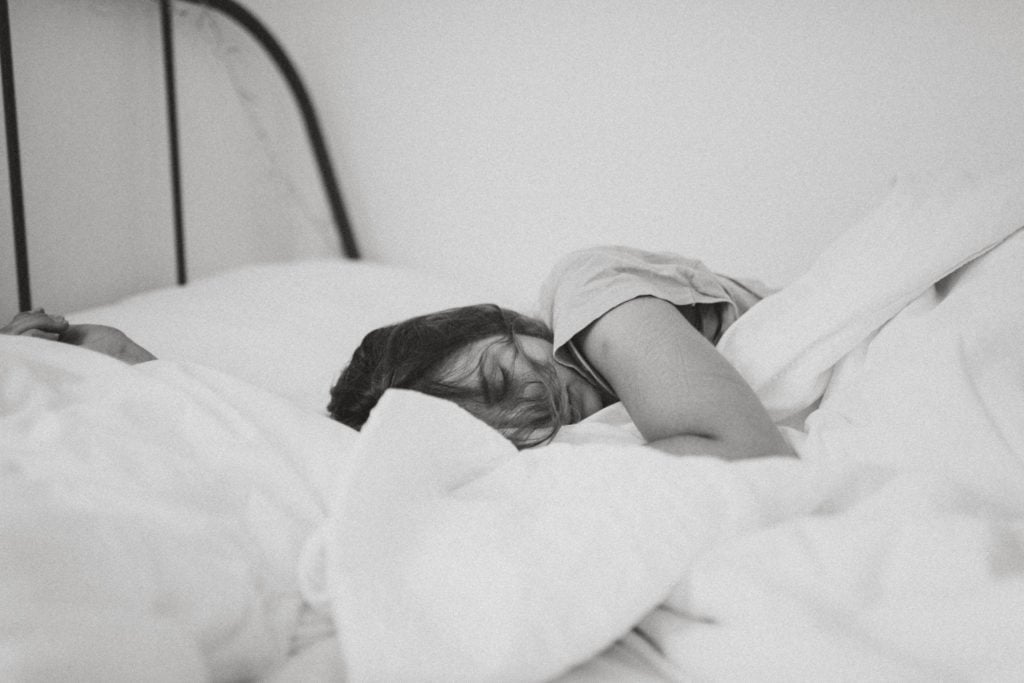
How to Self-Tape for Film
Film… the final frontier.
It’s easy for an actor to think of a role in a feature film as a kind of Mount Everest; for a lot of us, it’s a major goal for our careers that we are desperate to snap up. For that reason, having an audition or a self-tape to shoot for a film role can be rather daunting. But the truth is, self-taping for film isn’t actually all the different to self-taping for television or commercial roles. Most things you already know about self-taping will apply here.
That being said, we put together some specific things to consider when approaching your self-tape for film, as well as some general advice to put you in the best position to be considered for the role. We’re going to assume you know some of the basics of what a self-tape is and how to make one, but if not, never fear! You can check out our beginner’s self-tape advice here.
Read more: Top 6 Game-Changing Self-Tapes
*Note: Self-Test and Self-Tape are terms used interchangeably – they both mean the same thing.
Pimp Your Set-Up
First things first: let’s make sure your self-test set-up measures up to industry expectations.
Here’s the good news: these days, it’s not necessary to have a bunch of expensive gear to make a self-tape. A few years ago we might have recommended investing in a decent video camera, but it’s 2021! We all have a high definition video camera in our pockets, so why not use them? In fact, casting agents now expect your self-tape to be shot on a smartphone, so don’t feel you need to drop major dollars here. But if you do want to drop some cash, here’s our Professional Self-Tape Set-Up Guide.
You might want to get yourself a tripod fitted with a smartphone mount so you can set up your shot easily and quickly. You should be able to find some cheap options online. Otherwise, you’ll be stacking books on top of boxes on top of chairs to get the perfect shot… not fun.
Read More: $250 Self-Tape Set-Up Guide
What about your backdrop? The key to a good self-tape backdrop is having a single block colour without anything distracting in the shot. If you have a nice big blank wall in your house – fantastic! But a lot of us are living in smaller spaces, and if your wall has a clock, or a picture frame, or even a nail or chipped paint visible then that can look both unprofessional and distracting to the casting agent viewing your tape. It’s useful to have a foldable blue screen to use as a backdrop – these can be found on eBay/Amazon for very cheap.
Here’s a tip: cheap blue screens like this tend to have visible creases which can look a little sad. A clothing iron on a low heat setting can take care of those and smooth out your screen for you. Oh, and if you’re using a wall in your house, you’ll want something in the realm of cream, grey or blue – a hot pink wall may look fabulous but it’s probably not appropriate for your self-tape.

Let’s talk lighting. This is often the trickiest element to get right. Your aim is to be lit from the front and to minimise shadows on you and your backdrop. Once again, eBay is your friend, and you can find some very affordable light boxes with stands (having two is a good number) for very cheap. Setting one up either side of your camera/phone and directing the light towards the subject (you!) is the basic way to go, and should help to eliminate some shadows. However, space might be at a premium and not all of us can afford to be dropping our hard-earned on a whole bunch of gear, so if you can’t get your hands on some lightboxes, you might want to aim to shoot during the daylight hours and utilise any sunlight that’s available to you. Remember, it doesn’t have to look like a Vogue cover shoot, just try and reduce those nasty shadows as much as you can.
Read more: Biggest Self-Tape Mistakes!
Do Your Research
It’s wise to take a researched understanding of the type of film you’re auditioning for into your self-tape. Film is a vast medium that spans a huge variety of styles and genres. Knowing exactly what you are auditioning for is vital.
One thing to consider is the filmmaker/director themselves. What works have they made in the past? Can you identify any stylistic markers that they tend to use in all of their work? What kind of actors do they like to work with, and what is it about those actors and what they bring to their roles that this filmmaker seems to like? What genre do they work in and what is their approach?
Looking into these kinds of questions can help you pitch your performance is the right zone for the film you are taping for.
Take Your Time
If you can forgive the generalisation, film tends to take more of a nuanced and in-depth look at the emotional life of a character than the plot-driven world of television or the product focus of advertising. It’s important to take a similar approach to self-taping. If you can, set aside plenty of time to spend on your self-tape, so you don’t have to rush.
Actors are, for better or for worse, idealistic and ambitious beasts. We all love that feeling of nailing the scene, one take, that’s a wrap, see you at the premiere. However, this can be our downfall, an approach that can ultimately limit us. It might be useful to think about this: rather than trying to nail the scene on the first and every take, use the first few attempts at it as opportunities to play with the scene, to mine the text for clues and given circumstances, to make discoveries. Think about what you learn from the scene by doing the scene, what details and texture you can add. Using this kind of approach, if you compare your first take to your tenth, you’re sure to notice a striking difference and improvement in your performance. As actors, we often carry an instinct to try and ‘get it right’, but if you can remove this pressure from yourself, you’ll open up space to play, learn and really take ownership over a scene. And, as a bonus, it’s likely going to be way more fun this way!
So, instead of asking yourself, “how can I nail this scene”, try asking, “what can I discover by doing this scene?” and trust that the right take will come.
Think Outside The Box
Have you ever had your first look over a scene you have to self-tape and think, “oh, great, I know exactly how to do this”? Well, while it can be good to trust your first instinct, it’s likely your initial reading of the scene that you’re taping is very similar to, well, everyone else’s.
The best film acting often challenges our perceptions about how a person might react to a situation, and our favourite actors are those who turn out surprising and unexpected renderings of a scene. This is what keeps us interested and curious to see what happens next.
You can take this idea into your self-tape. What happens if you play the scene entirely against your first instinct? What happens if you flirt where another actor might humiliate? What if you try and take the higher status in the scene, even when your character is written to be of lower status? As long as it is within reason and you feel it can be justified within the context and given circumstances, you’d be surprised at the scope of possibilities for how a scene can work.
Once again, if you go into it leading with your sense of curiosity and discovery, you’re bound to find unexpected and interesting results in your work. And that is the type of stuff that casting agents love!
Preparation and Performance
Like we mentioned earlier, your work in front of the camera is largely the same whether you are auditioning for television or film roles. So all the basics of preparing for your scene apply to self-taping for film: script analysis, given circumstances, beats, shifts, etc. All of that good stuff will be useful here as well.
That being said, film acting is generally considered to be on the more subtle, internal and nuanced side of things, so while you don’t want to alter your work too much, you might consider tweaking your performance in this direction, provided it still suits the style of the film. For this reason, you may want to consider shooting a couple of takes in a close-up and see what that does for your performance, particularly for a scene with a lot of emotional weight. The rule of thumb for this is the more close up the shot, the “smaller” your performance needs to be, as all those minute movements in the face and voice will read as larger. It might be useful to give this a try just to see the results, it may spark ideas for ways to play the scene that you hadn’t considered. One trick you can try here: what happens if I play the scene and do absolutely nothing with my face? It may give the scene a power or an emotional quality that you didn’t expect.
The casting agent may have specified a particular shot size for your self-tape, for example, a mid-shot. If you’re keen to send in your subtle, internalised, close-up version, make sure you send a version in a mid-shot as well. Never disobey the Casting Director!
Sleep On It
It’s well known in the scientific community that sleep is one of the major factors in the brain creating and consolidating memory. This is a vital thing for actors to understand, as getting at least one good night’s sleep after learning lines and working on a scene will assist you greatly in getting those lines and those inner thoughts alive and in your body. When you’re finally lining up in front of the camera to shoot your self-tape, you want to know that those lines are now part of your actorly DNA and sleep is a major factor in this regard. If you can, start learning your lines the day you get them and make sure you are getting a very good sleep each night before you decide to shoot your tape. It’s especially helpful to review those lines just before you head off to bed, so they’ll be fresh in your mind while your brain does its thing during your well-earned shuteye.

The Final Product
Once you’re happy with your self-tape and you’re ready to send it off, take a moment to put together the video file with all the usual things a casting agent expects when submitting a tape; a clear and simple title card with your name, agent and the project and character you are testing for; a nice fade to black or cross blur transition between multiple scenes; a chat to camera or ‘slate’ at the end of the file where you state your name, age, height, agent and any other details they may ask have asked for. Simple software such as iMovie can do all this stuff easily and if you haven’t, it’s good to take the time before your next self-tape to learn how to use your video software of choice in order to put together your next tape efficiently and quickly.
If you have two or more different versions of the one scene, it’s more than okay to send them both in (keeping them all still in one video file for ease of use) to give the casting agent some options. In your final video file, be sure to use title cards between these different versions to differentiate between them (“version one”, “version two”, etc) and of course make sure your favourite one goes first! If you’re unsure whether it’s okay to send multiple versions, feel free to ask your agent or the casting agent if you can send two or more versions. It’s also good to check this brief, as the casting agent may have already asked for multiple versions. Always make sure you follow their instructions carefully, it will make their jobs much easier and you can bet they will appreciate and remember that!
And finally…
Be Kind
…to yourself! Self-tests are hard, they can be stressful and anxiety-inducing, and we actors can be obsessed with ‘getting it right’. And then add onto that the fact that film roles are a bit more sought after and suddenly we can be piling huge amounts of pressure on ourselves. It takes practice to not always put pressure on yourself, but you can get there. Take a breath, take your time, and try and reconnect with your sense of discovery.
The more you do self-tapes, the easier they get, so take your next self-tape as an opportunity not only to get to do a bit of acting and to have a play but also an opportunity to get better at self-taping! Remember: you have time, and more opportunities will present themselves down the line.
Oh, and did we mention: have fun?

Leave a Reply